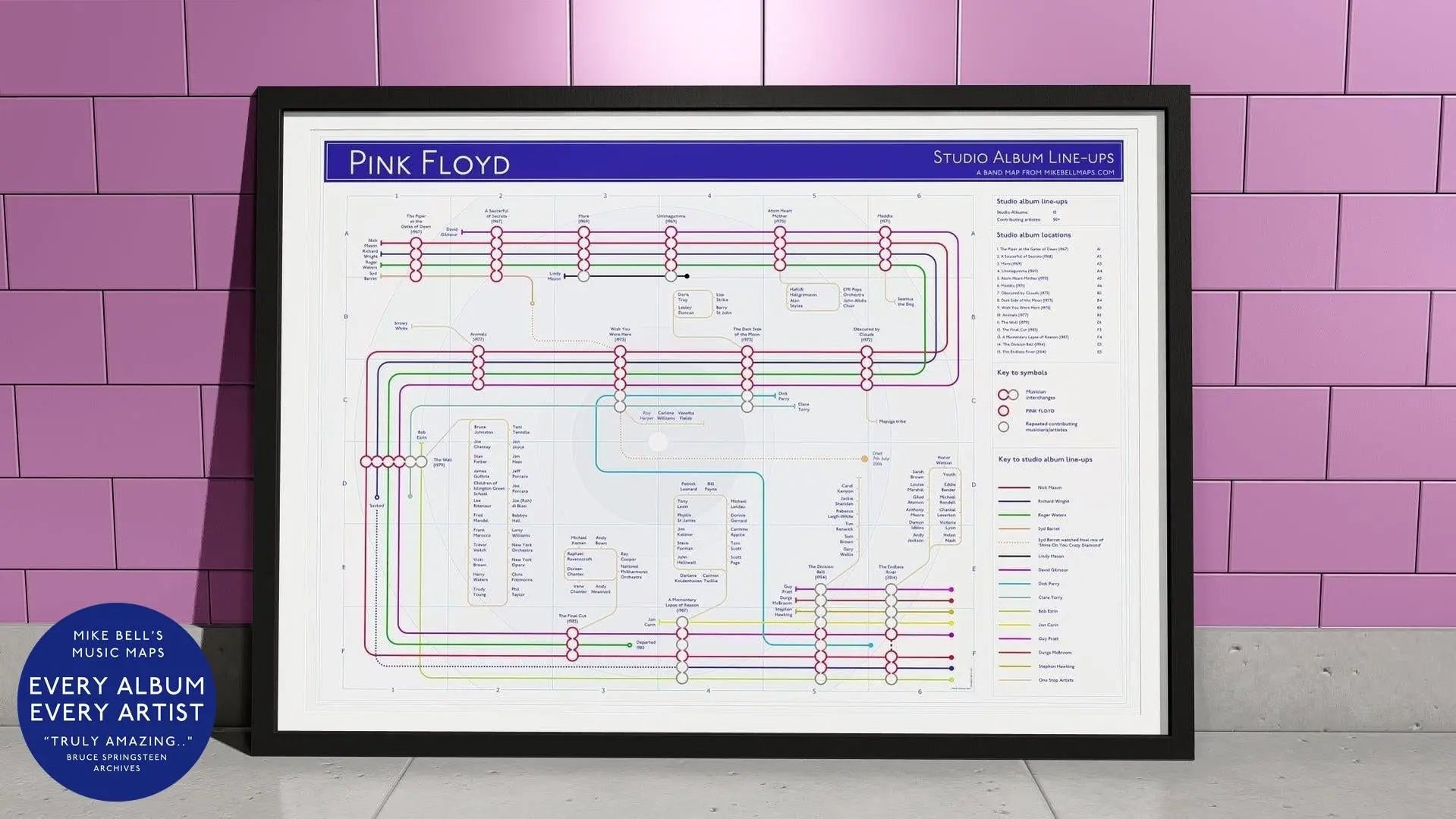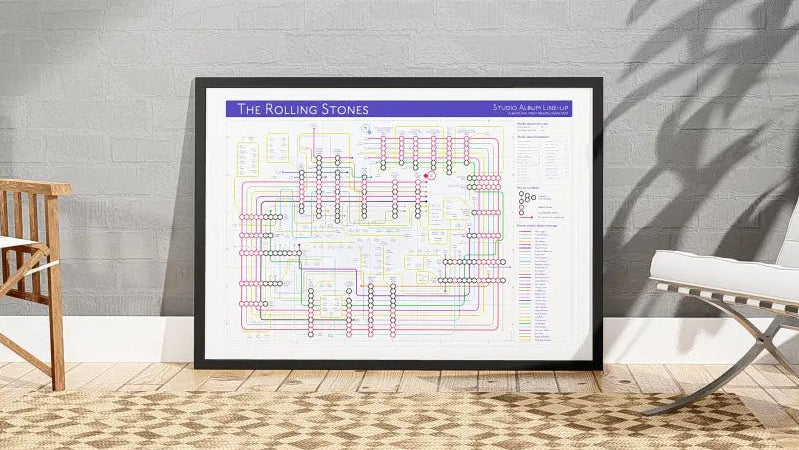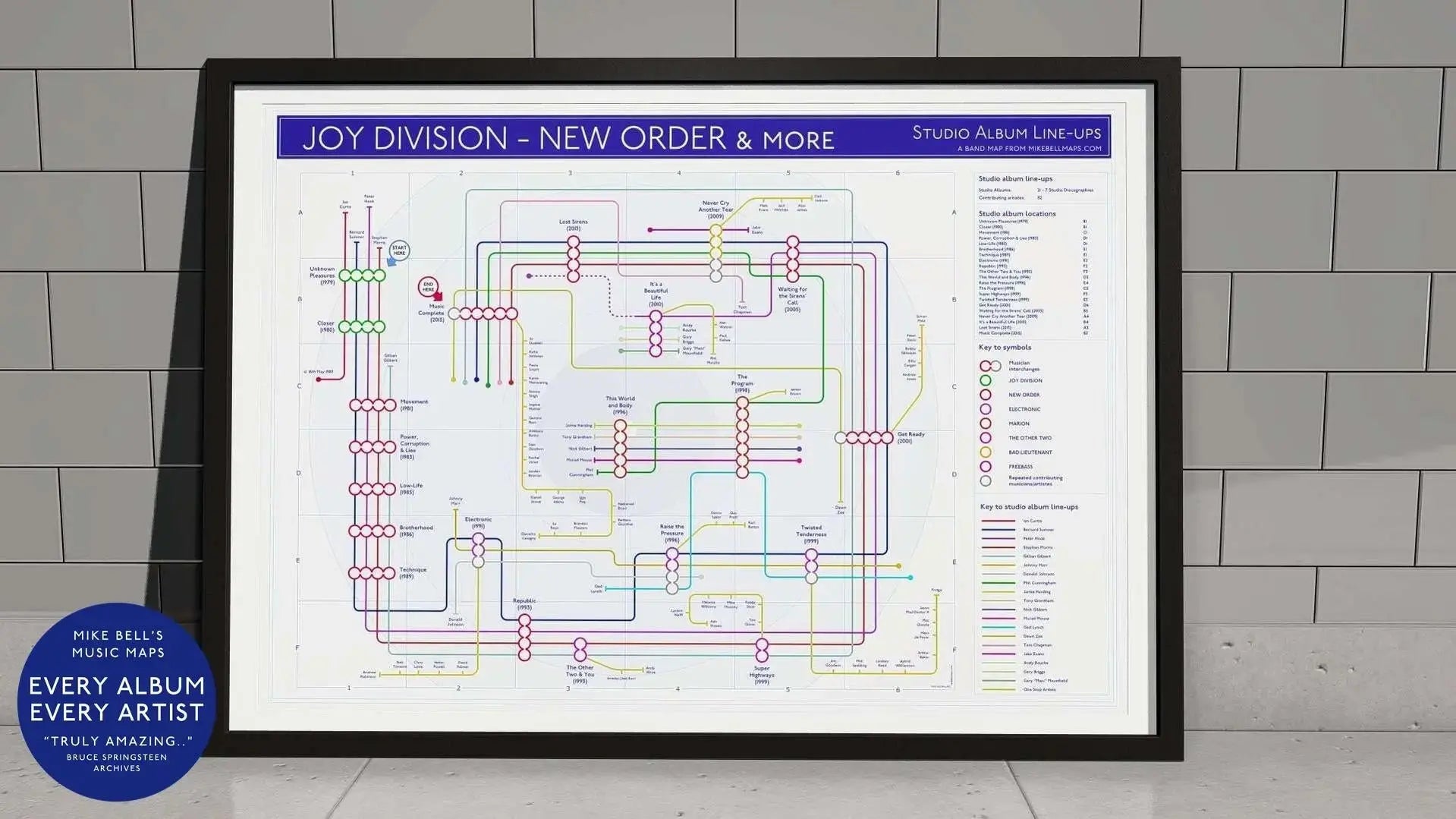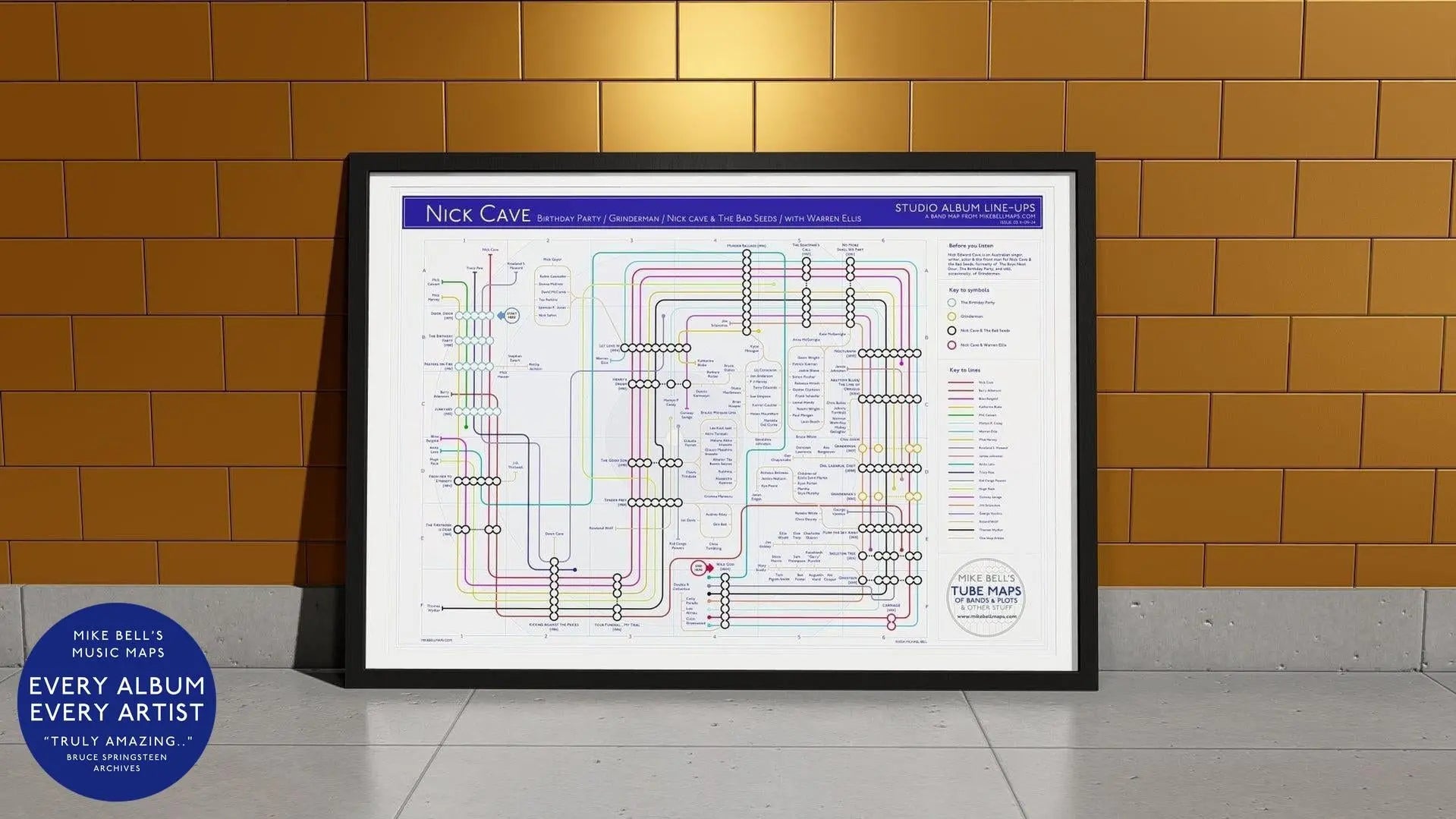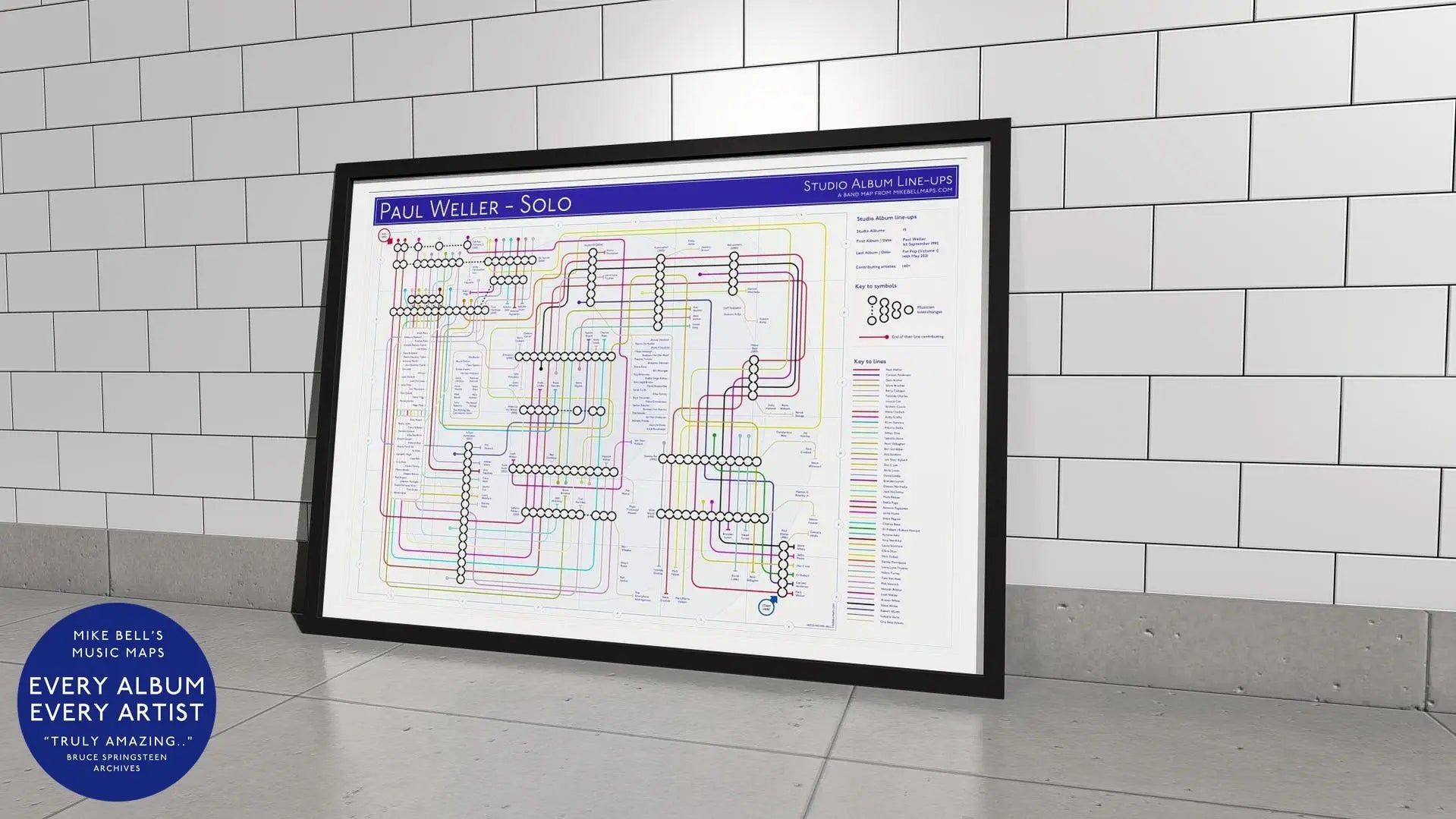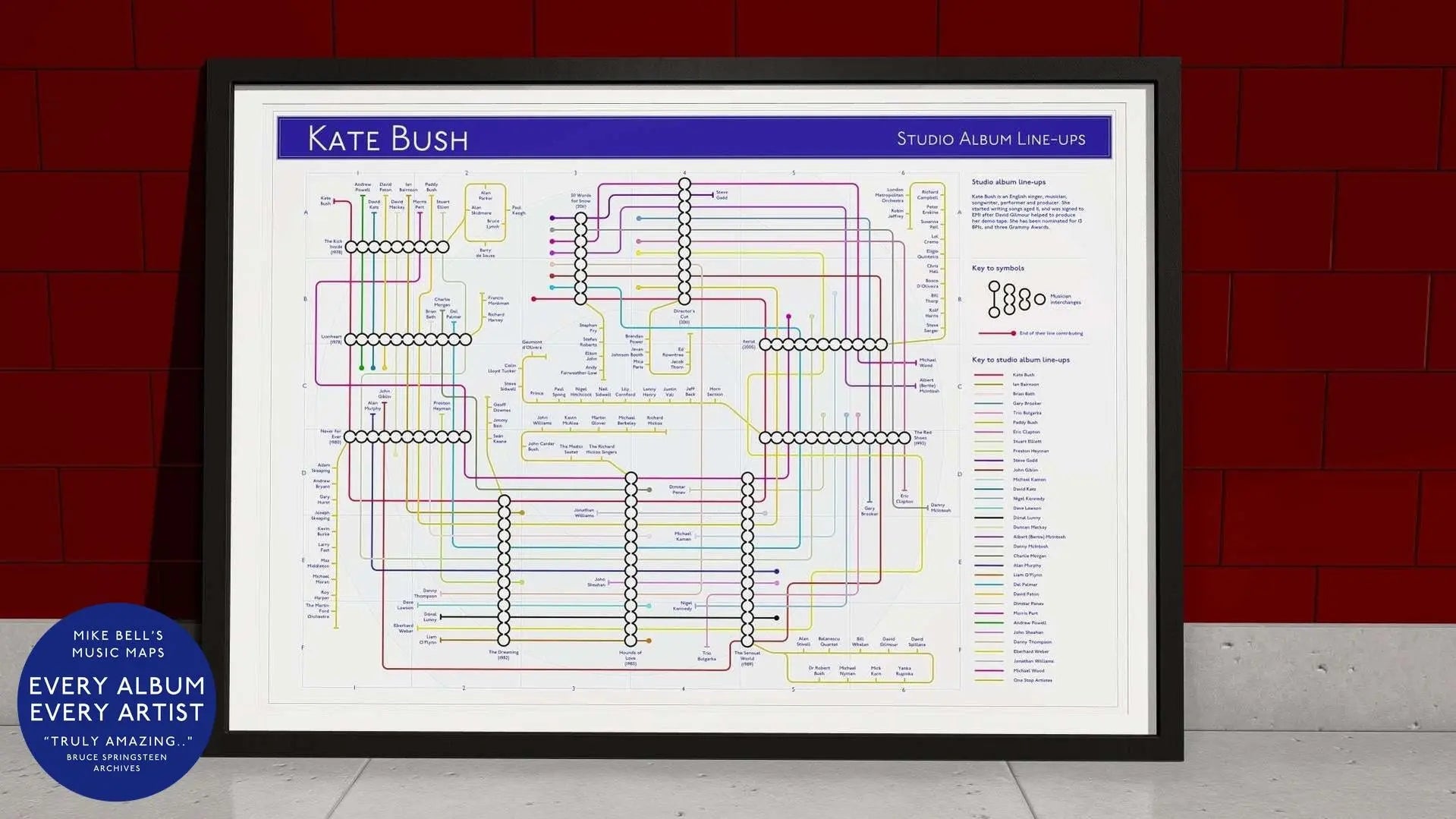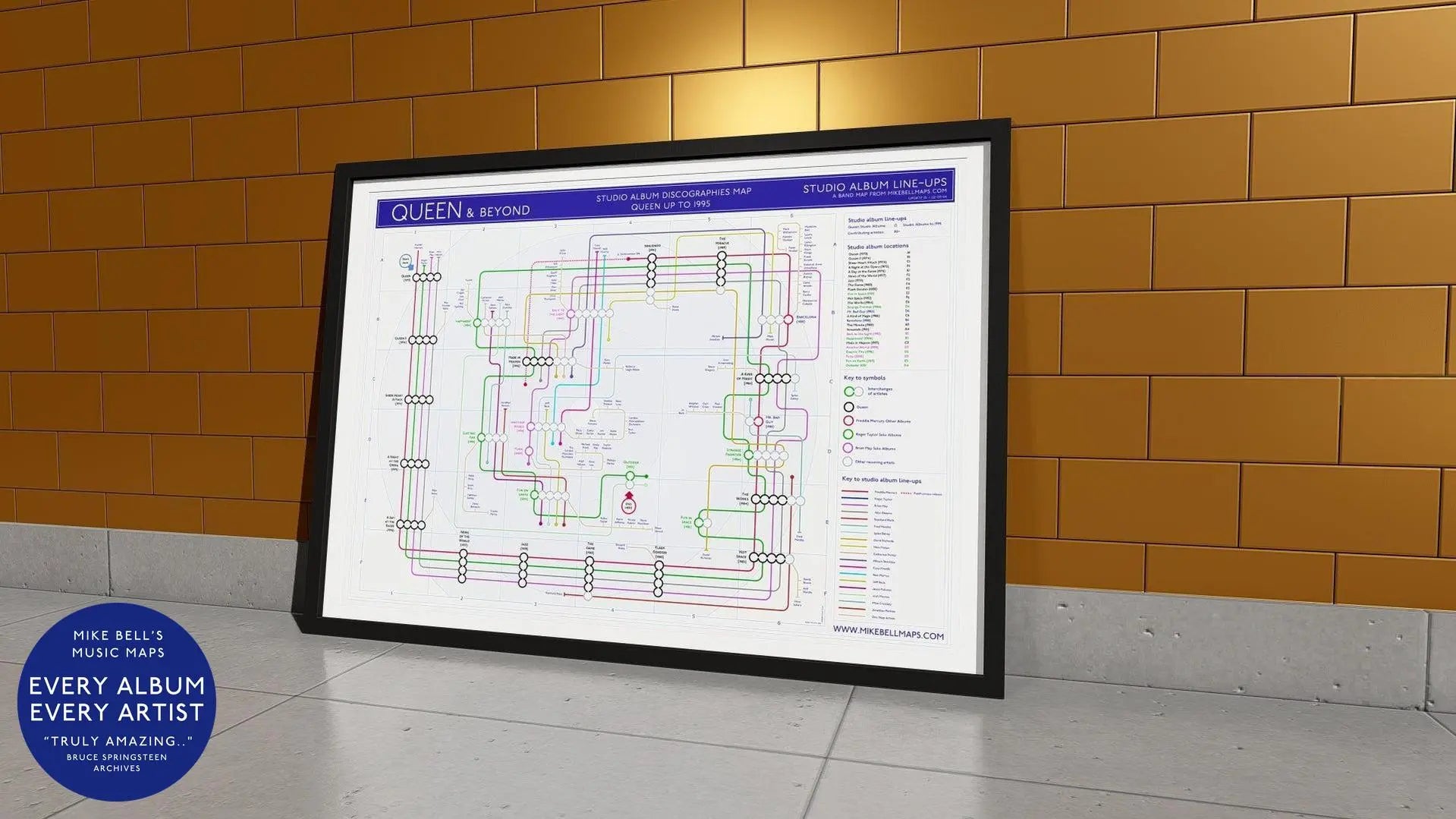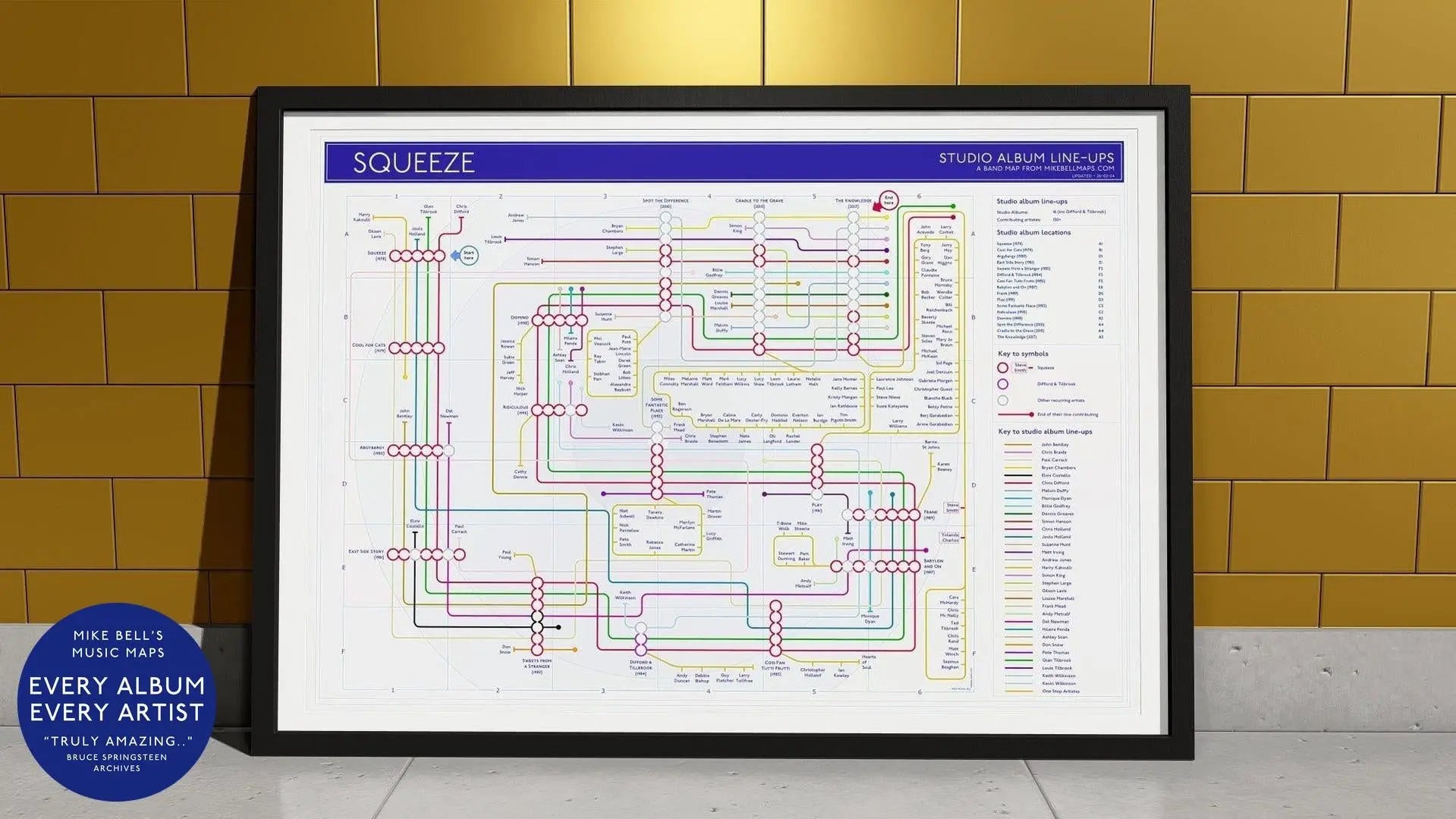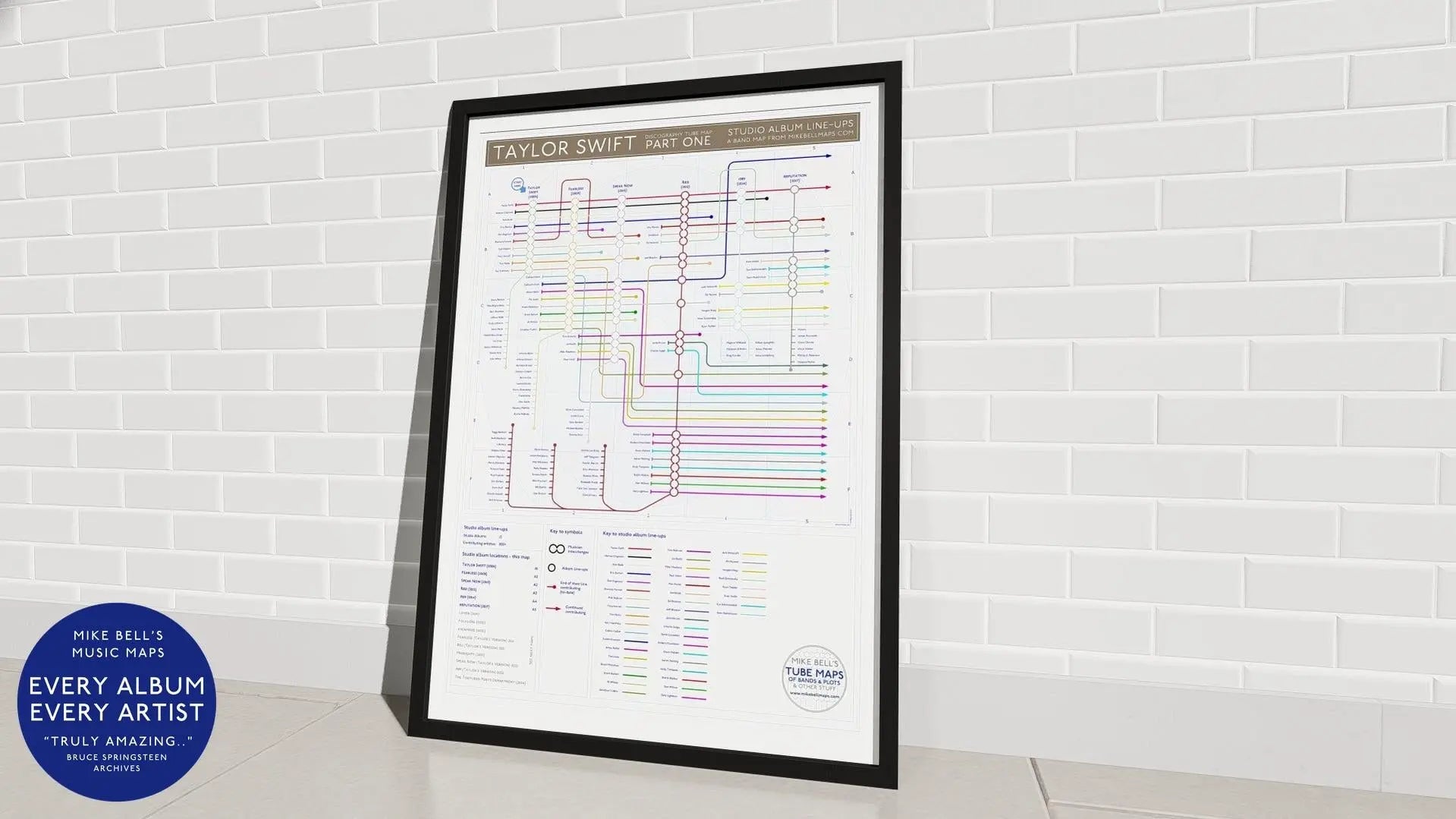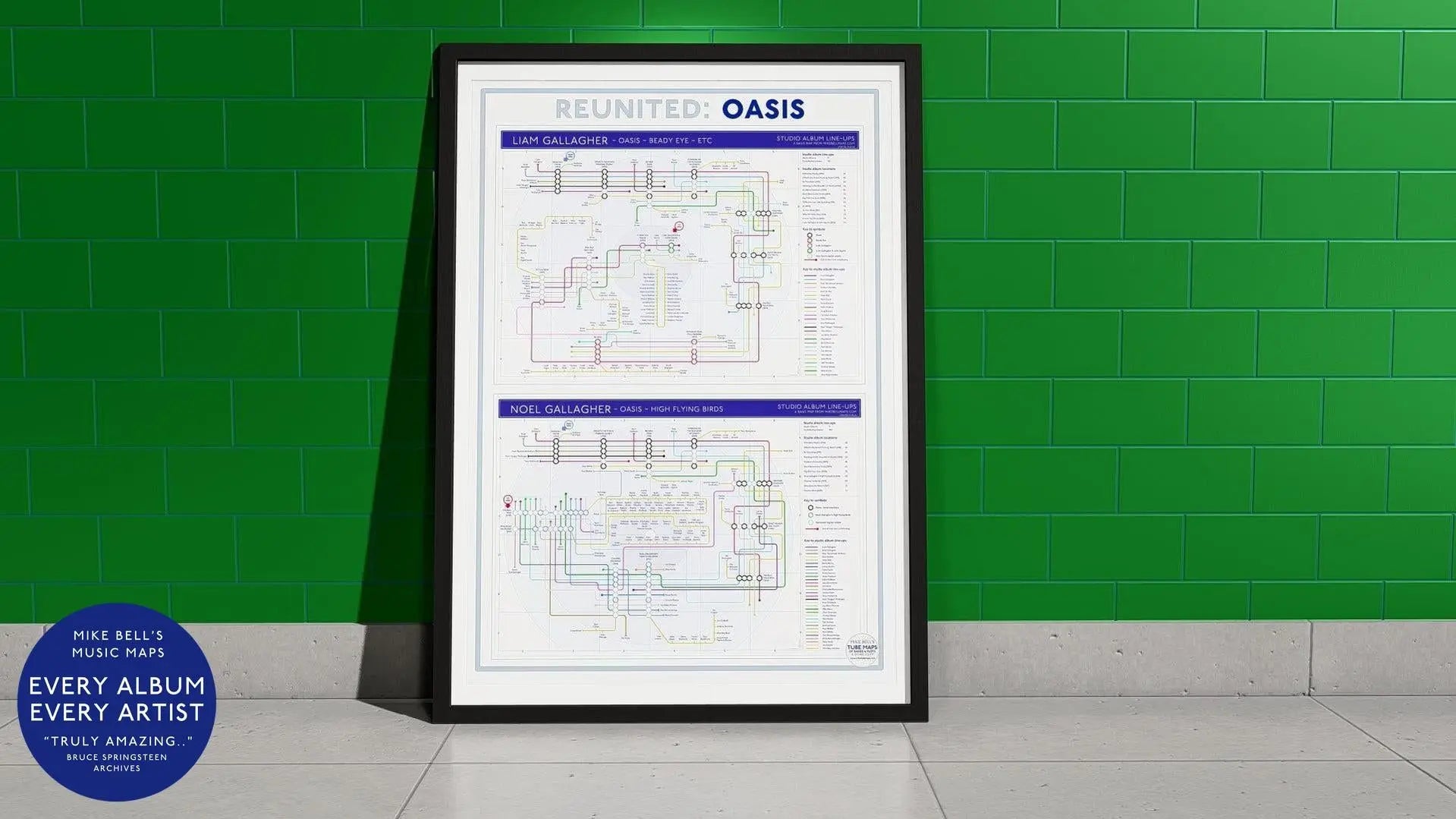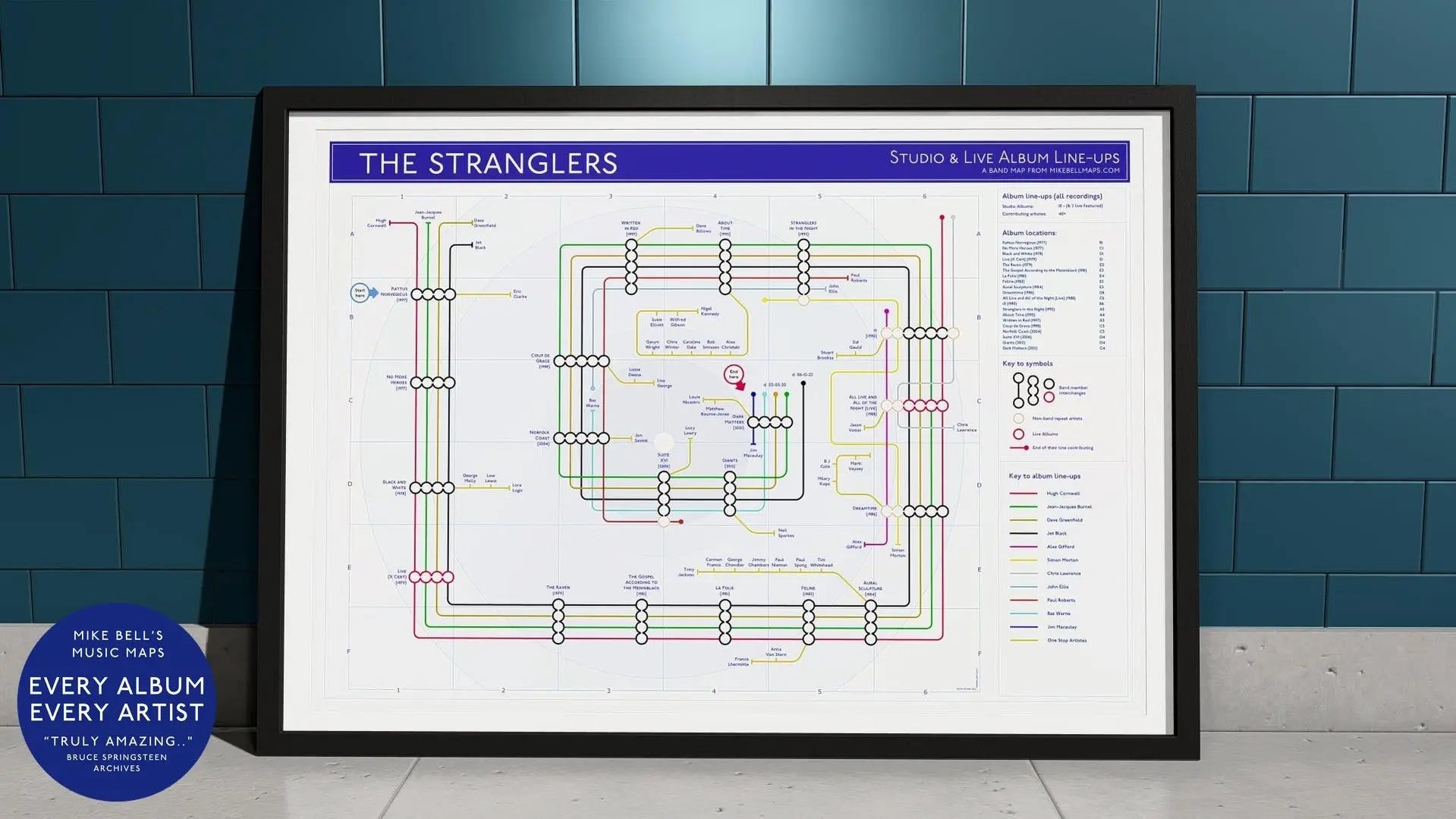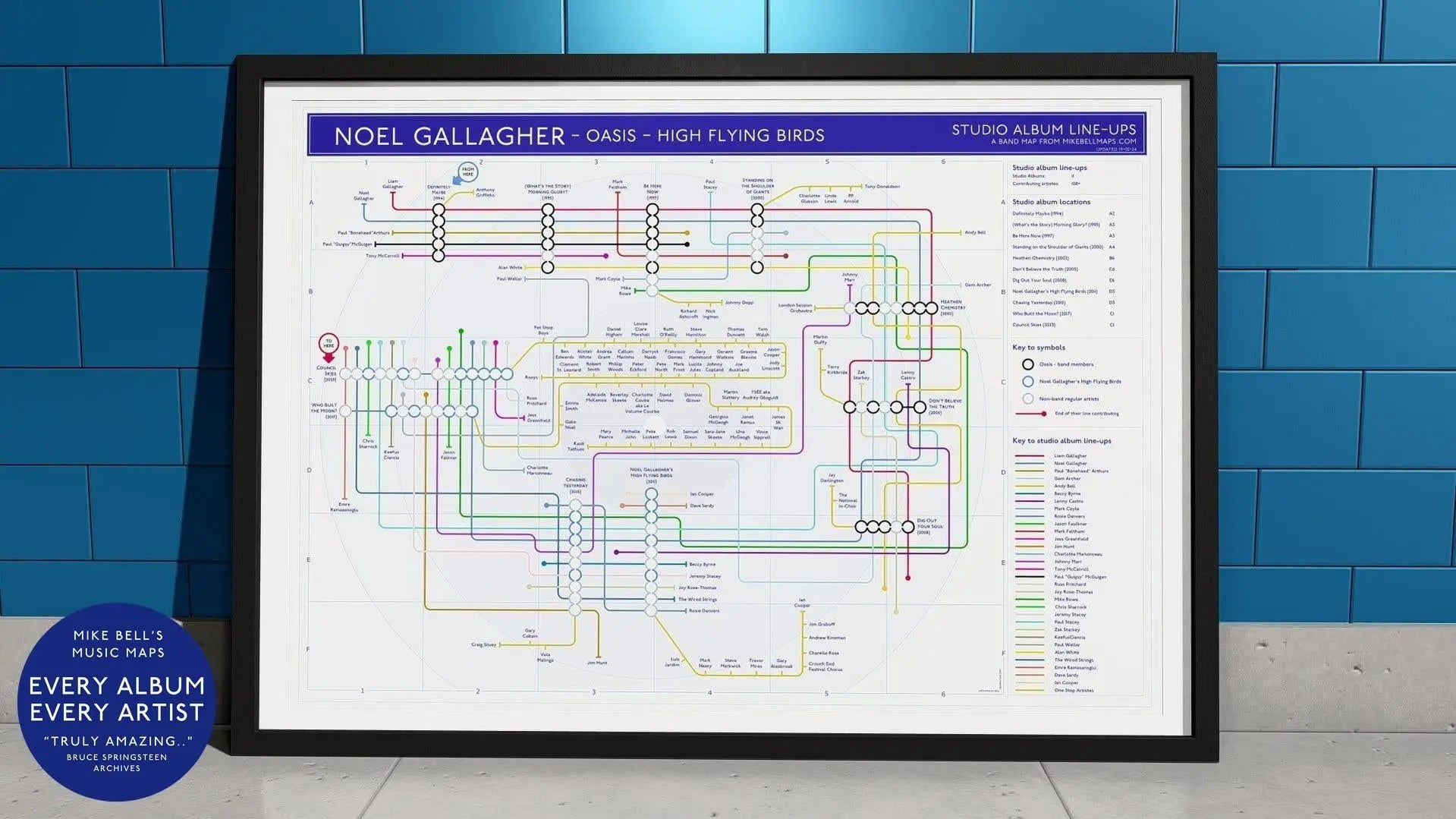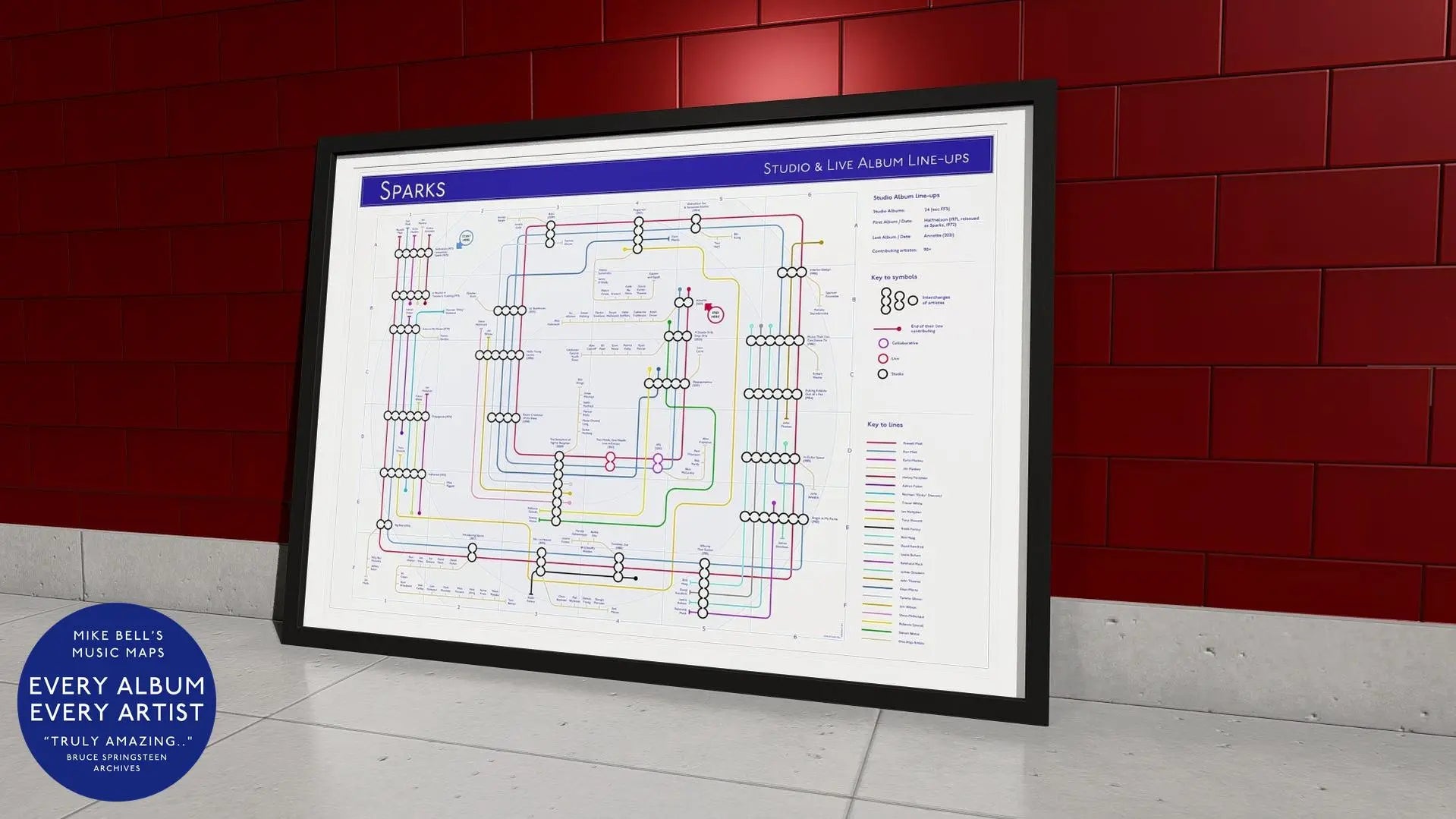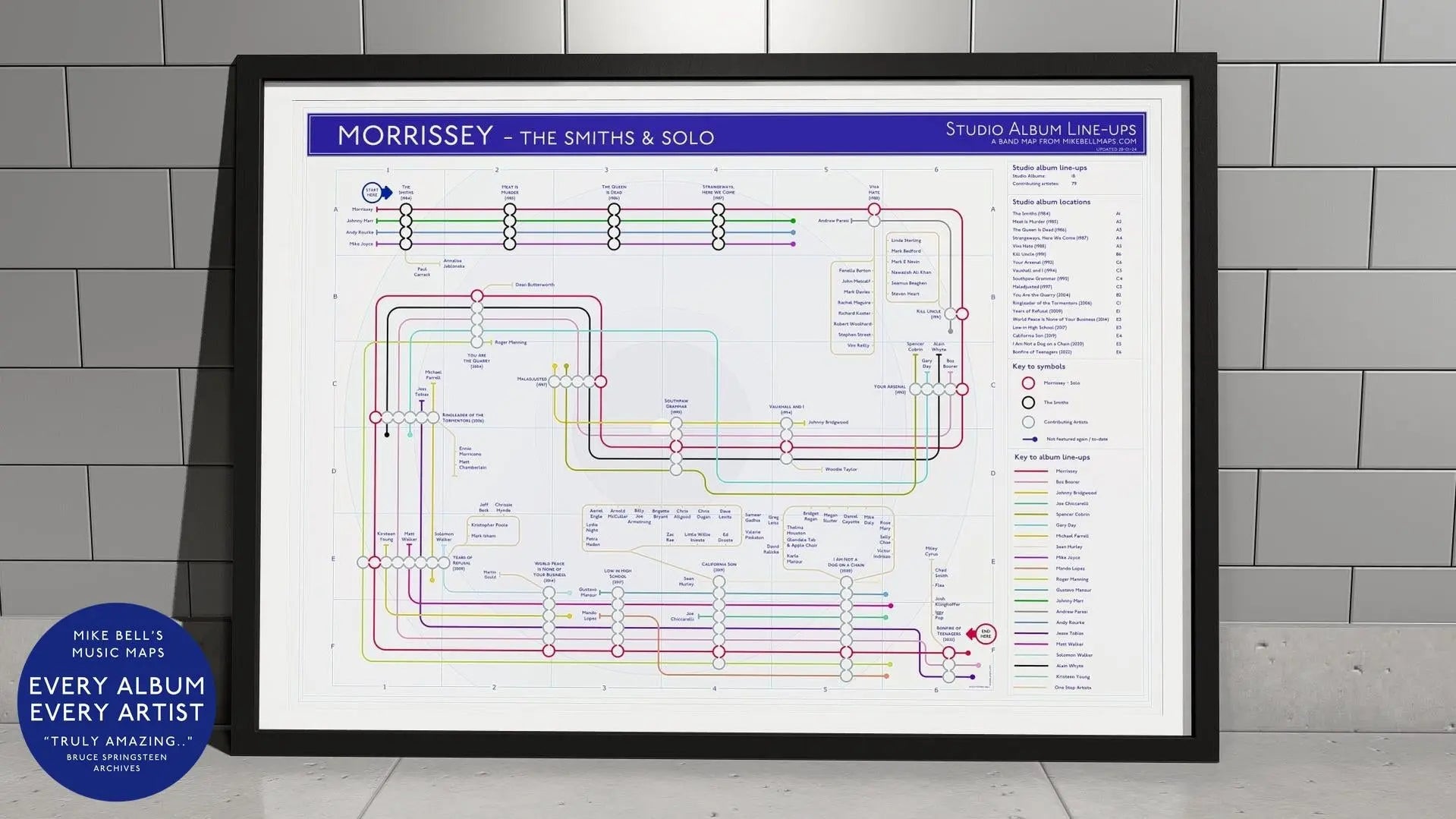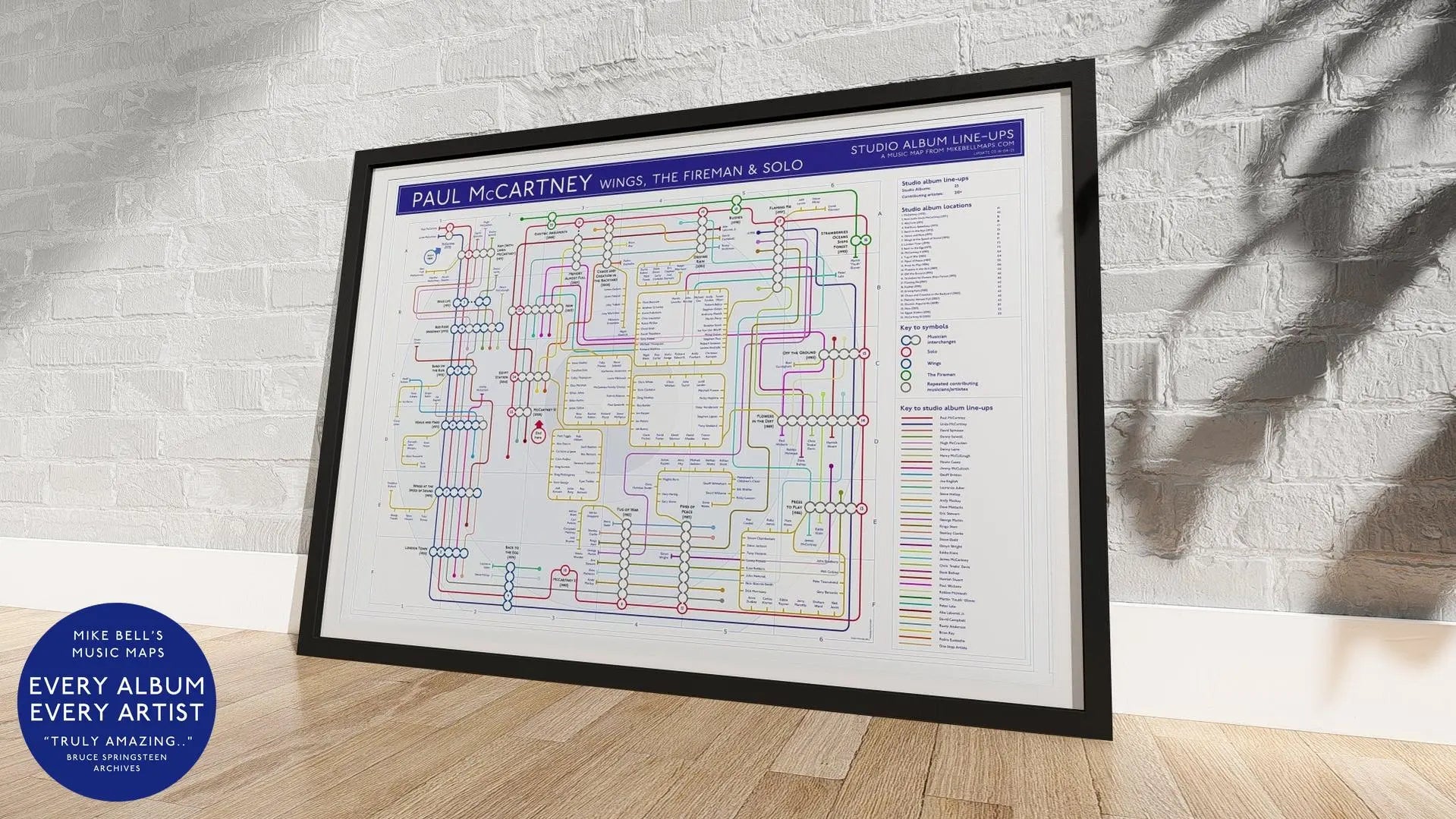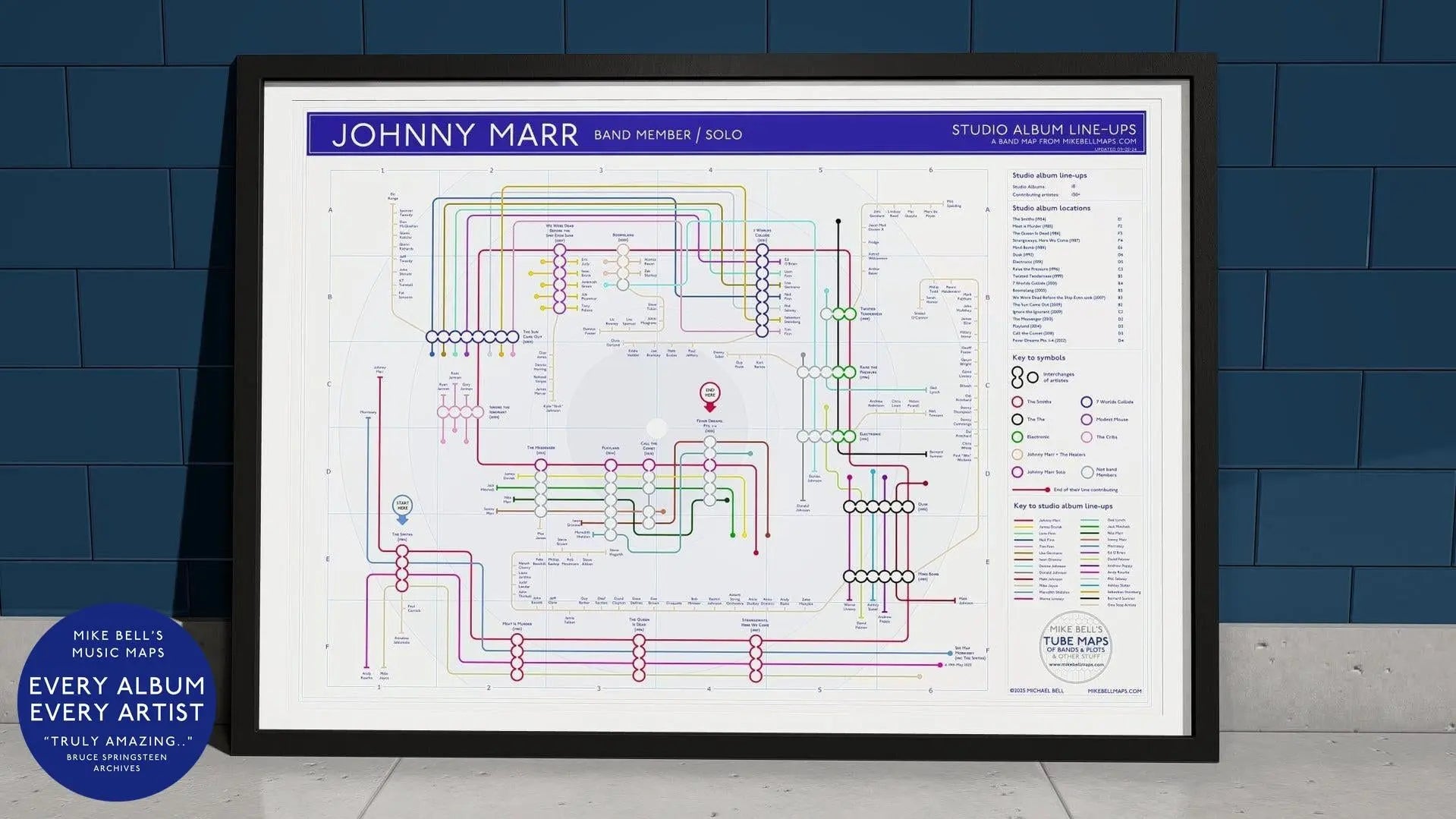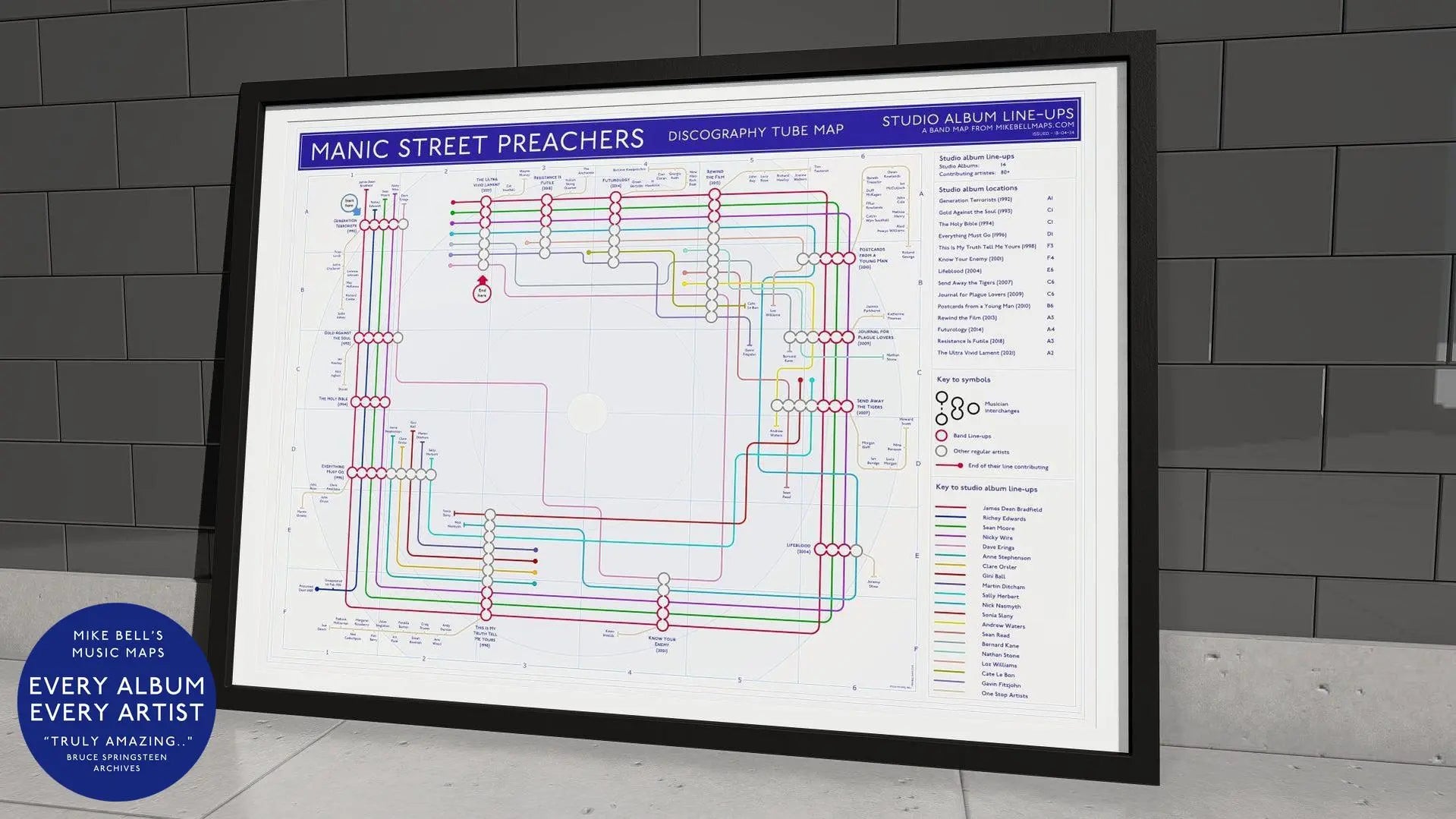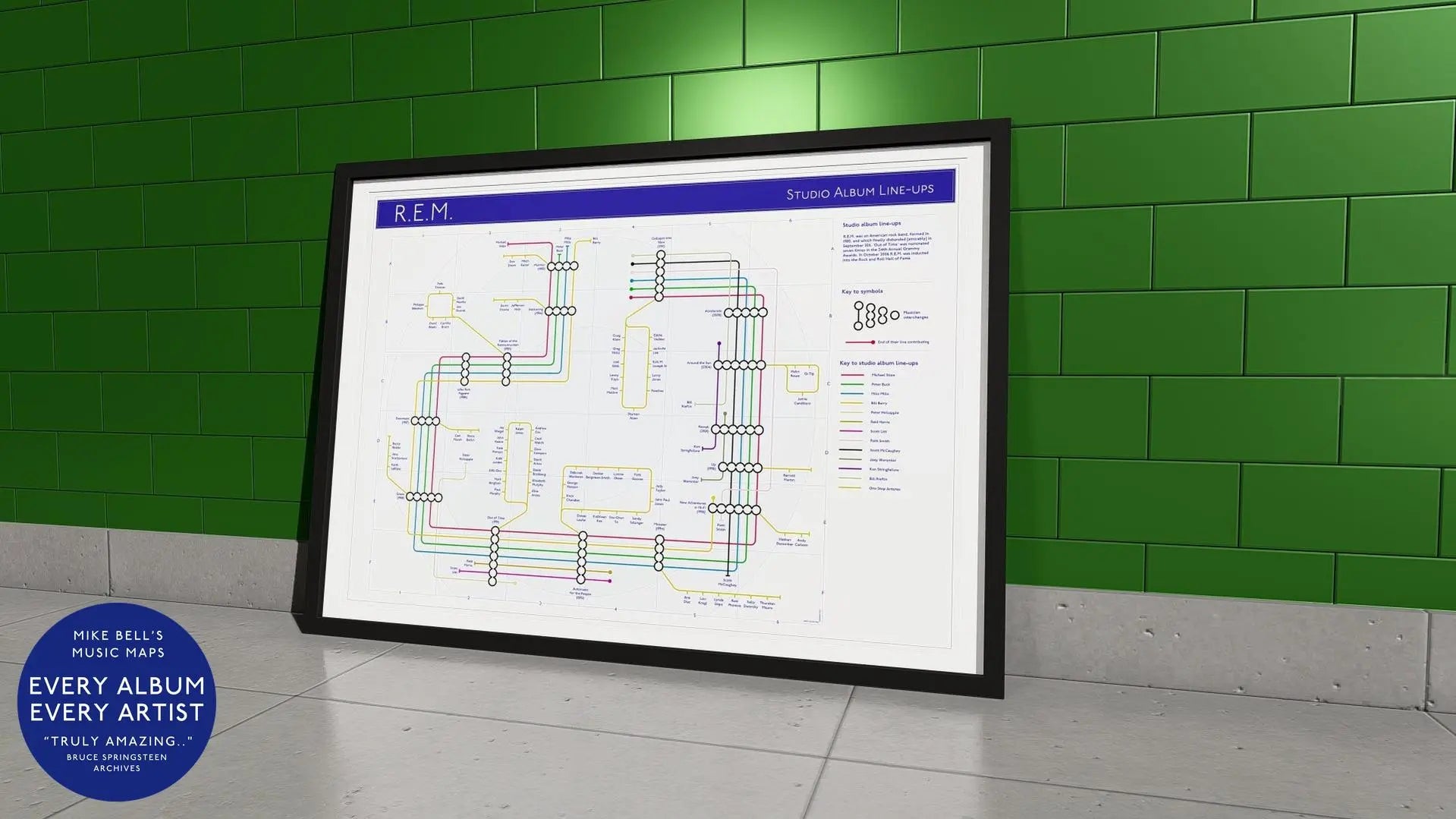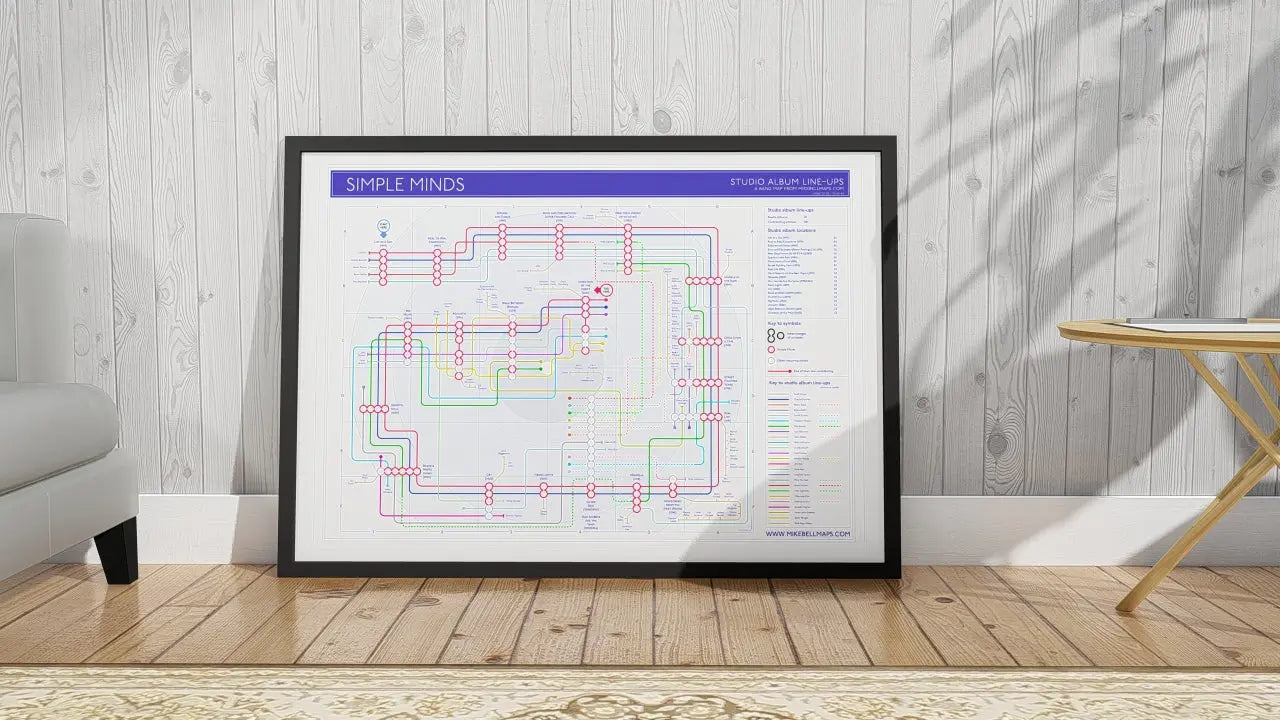
How My Music Maps Tell a Story, Not Just Show the Way
by Mike Bell
·
When I design one of my music maps, I’m not merely plotting out who played on which album. I’m constructing a visual story.

Every album serves as a station, reflecting a point on the band’s timeline, and every musician represents a thread woven through the band’s history. The outcome functions on two levels: it aids in navigating a complex discography while also narrating the band’s evolution throughout time.
A Story You Can Follow
Every map is created from thorough research. I record every credited musician and guest artist, album by album. That data then transforms into a visual narrative:
Albums serve as chapters in the band’s narrative.
• Lineups evolve, musicians come and go — and you can witness it all unfold.
• Guest artists underscore pivotal creative moments.
• The entire journey progresses through time, from early releases to the latest work.
It’s a way of reliving the band’s legacy — not just reading about it, but seeing how it took shape.
A Map for Music Fans
At the same time, these are practical reference tools. Want to know who played bass on that third album? Or which records a particular drummer appears on? It’s all there. The maps are structured so you can instantly spot:
• Where each album sits in the band’s timeline
• Which musicians were involved at each stage
• How the sound and lineup evolved over the years.
Just like a tube map helps you navigate a city, mine enables you to find your bearings in a band’s discography.
Telling the Full Story
The power of these maps lies in how they unite storytelling and structure. Knowing a band’s discography is one thing; witnessing it unfold in a way that connects the music, the people, and the journey is another. That’s what I strive for in every print I create.








